Hydrangeas are flowering shrubs that produce abundant blooms in an array of colors. Hues of pinks, whites, blues, reds, and purples are popular in this elegant and beloved perennial.
There are essential tips to keep in mind when caring for your Hydrangeas. Specifically, when to cut them back and how to do so.
Look no further; we have researched your answer and will give you all the details!
Late winter or early spring are good times to cut back your Hydrangeas. However, it varies and gets more specific depending on which type of Hydrangea you have.
There are 75 kinds of Hydrangeas, but we will go over the three most popular.
For panicle hydrangeas, late winter to early spring is preferred pruning times. For big leaf hydrangeas, prune them in late summer, around August, when the blooms are spent.
For smooth hydrangeas, cut them down in late winter as long as you have allowed 1 to 2 growing seasons for this variety to establish.
Also, you might be wondering how to prune Hydrangeas. Or, where on the stem do I cut? Even what diseases are they susceptible to? Continue reading to find out the answer to these questions and more!
![When To Cut Back Hydrangeas [And How To Do That]](https://gardentabs.com/wp-content/uploads/2022/08/2.34.-When-To-Cut-Back-Hydrangeas-And-How-To-Do-That.png)
When Should I Cut Back My Hydrangeas?
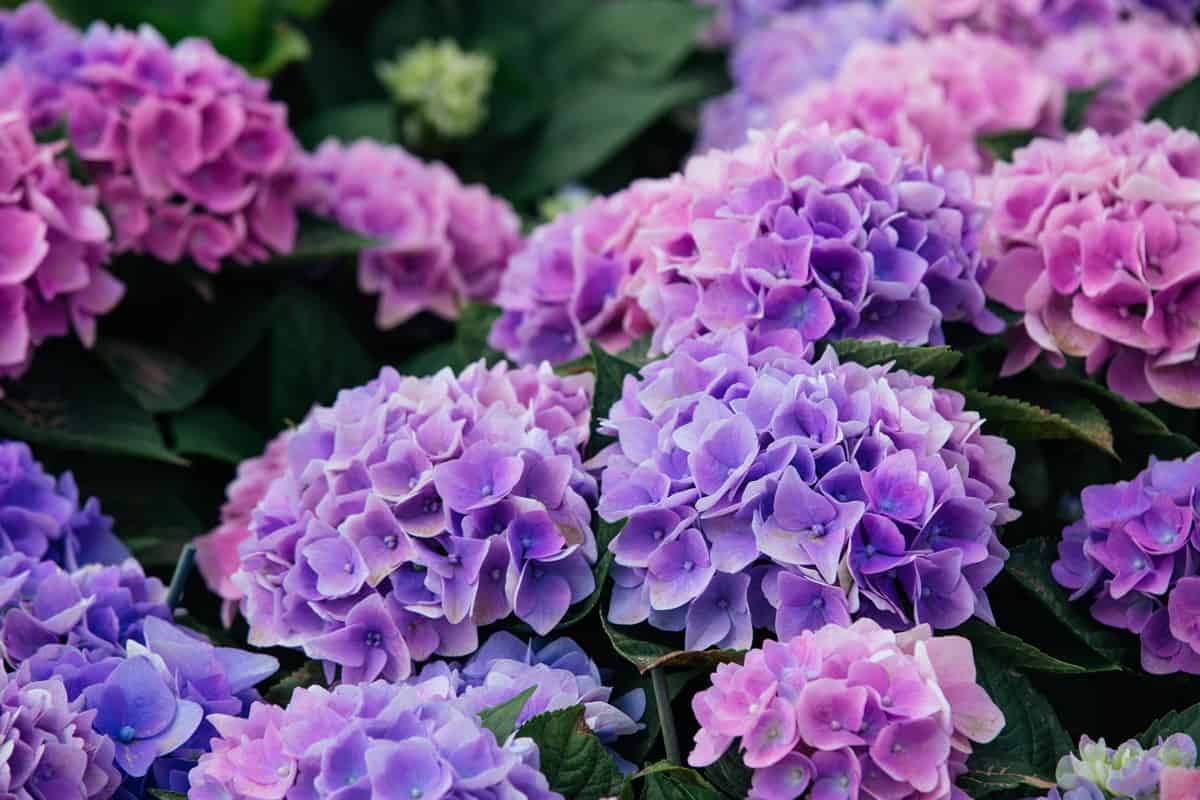
As we discussed, it depends on when you should cut back your Hydrangeas.
The first step is identifying what variety you have. Let's dive deeper into the top 3 most popular Hydrangeas and when to cut them back.
![A large purple Hydrangea flower, When To Cut Back Hydrangeas [And How To Do That]](https://gardentabs.com/wp-content/uploads/2022/08/3.-When-To-Cut-Back-Hydrangeas-And-How-To-Do-That.jpg)
Panicle Hydrangeas
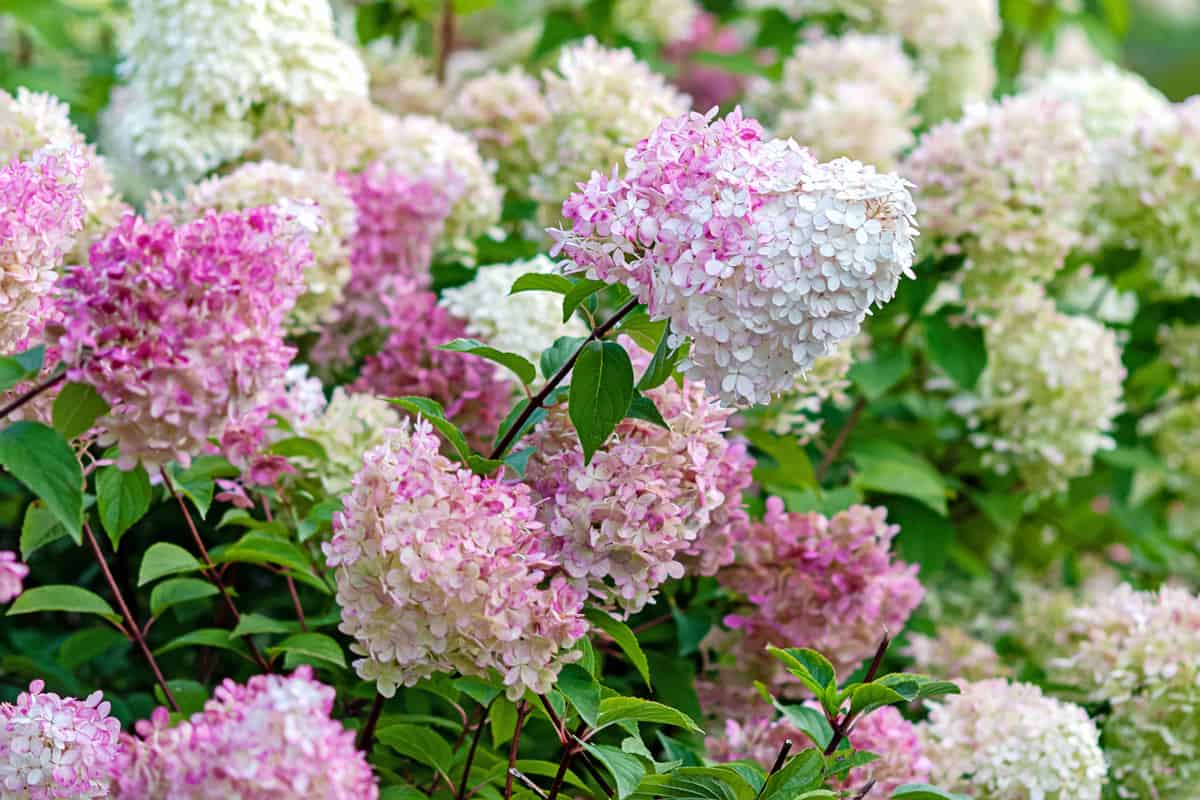
Also known as pee gee hydrangeas, this version is the easiest to grow and are great starter Hydrangeas for beginners. You will want to wait until the bush is dormant, or late winter, to prune.
This will be right before new spring growth emerges. This variety sprouts only on the new wood, the season's current stems.
Pro tip: Don't prune to shape the bush. Instead, only prune dead branches to keep this plant at its healthiest.
Big Leaf Hydrangeas
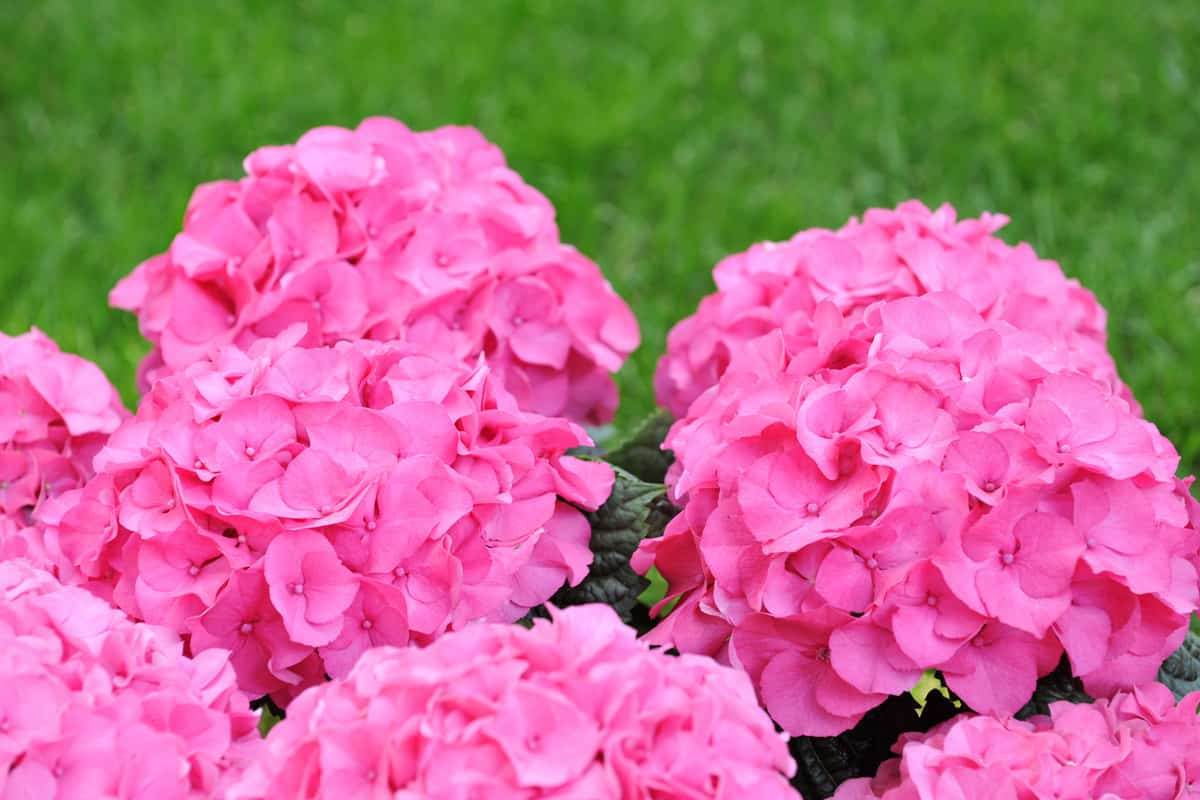
A small trim is typically needed for big leaf hydrangeas to maintain a robust plant. Cut out dead or broken branches but don't overdo it. The big leaf variety bloom on the new and old stems.
So regardless if you prune, they will blossom.
Pruning should be done in the summertime. Preferably no later than August 1st. Experts recommend avoiding pruning in fall, winter, or spring, or you could be damaging new buds.
Having said that, if you do prune the branches in spring, it could encourage smaller flowers rather than large ones.
Smooth Hydrangeas
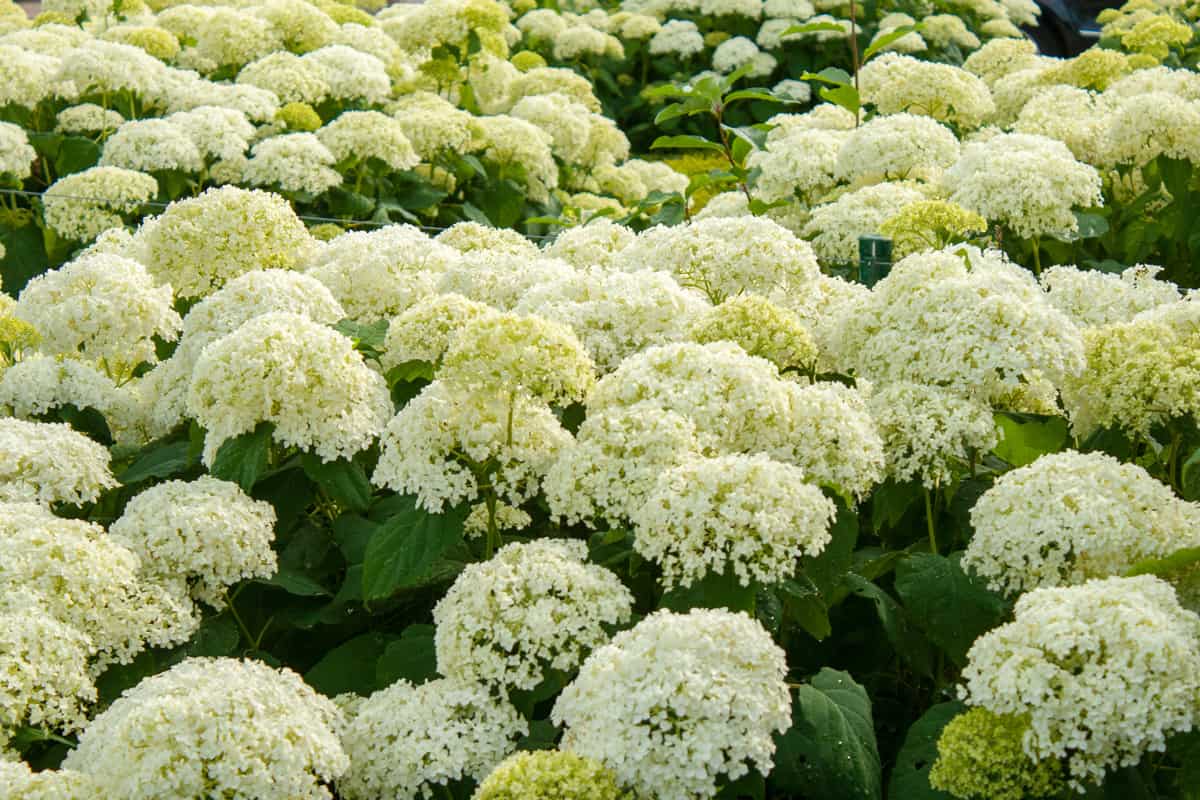
Smooth Hydrangeas bud on new wood or the current season's growth. Let them marinate for a couple of seasons before you do any severe pruning.
When the plant is established, prune close to the ground in the late winter. In any event, you should remove dead branches in the winter.
Technically, you can prune in the early spring if you don't do it in the winter. Nevertheless, pruning in late winter will produce the best results.
How Do I Prune Hydrangeas?
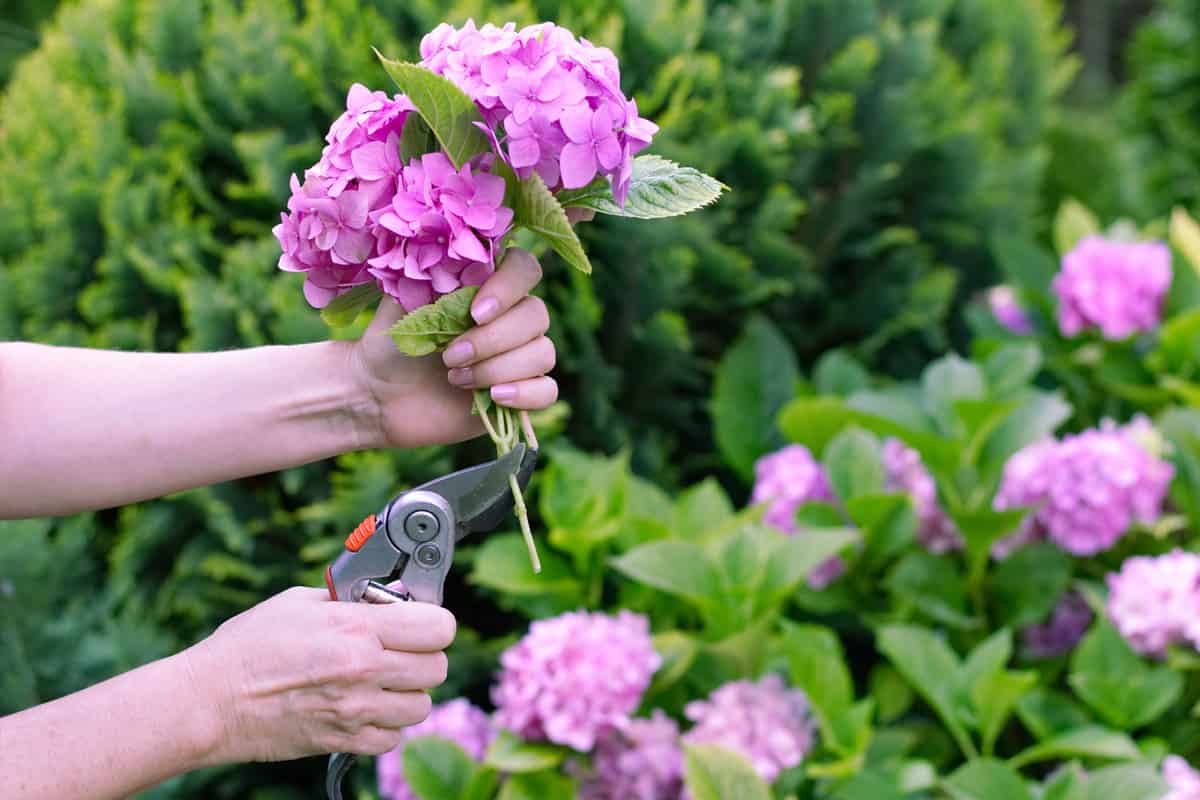
Now that we know when to prune each type of Hydrangea let's discuss where and how to cut the Hydrangea stems.
First, it is vital to remove any dead or diseased stems. They should come up fairly easily, or you can cut them down.
Then, make sure to prune right above a bud, about 1/4 inch above the bud. You don't want to cut too far from the bud or trim too close.
What Tools Do I Use For Pruning Hydrangeas?
It's crucial to invest in quality tools for the best pruning experience. For Hydrangeas, bypass pruners are the way to go. They work like scissors.
Make sure your pruners are sharp and make precise and clean cuts.
Click here to see this bypass pruner on Amazon
How Do I Care For Hydrangeas?
Hydrangeas require love and care just like any other plant or shrub. No matter the variety you have, there are basic care tips that most Hydrangeas need.
Let's love our Hydrangeas and discuss water, soil, and light preferences.
Water
Hydrangeas crave plenty of moisture, so make sure to water regularly, about 1 inch per week.
Furthermore, you should deeply water around three times per week, especially in hot climates. The key to Hydrangeas is consistently keeping the soil damp.
Tip: Add extra mulch around your Hydrangeas to retain moisture and keep things cool.
Soil
The good news is that these shrubs can tolerate almost any type of soil. Be that as it may, you can add compost to enrich poor soil.
Additionally, compost helps to create well-draining soil that our beloved Hydrangeas prefer.
Light
Generally, Hydrangeas need partial sun. In a perfect world, they would get plenty of sun in the early morning and ample shade during the hot afternoon.
Choose a spot where you get a little of both. As a rule, Hydrangeas can tolerate more shade than the sun.
How Do I Plant Hydrangeas?
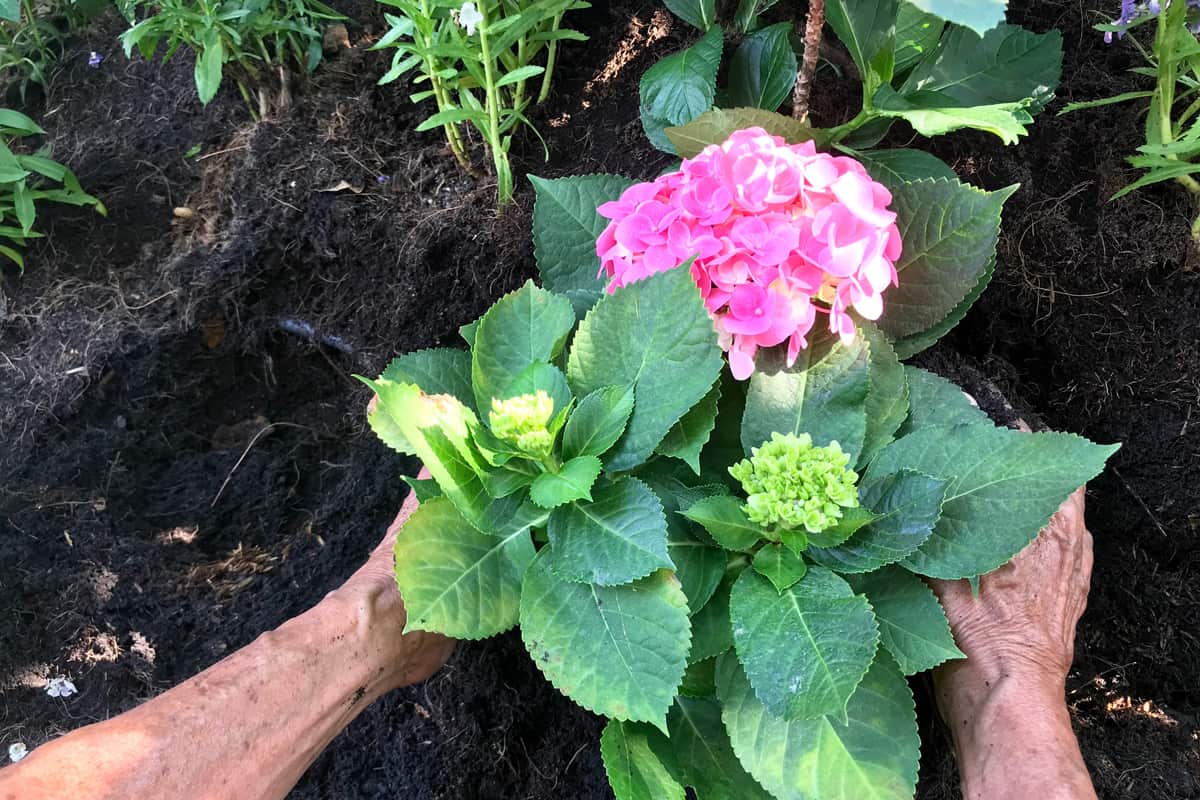
- Pick out a disease-free and pretty Hydrangea at your local nursery.
- Gently remove the plant from its container and check that the root ball is intact.
- Dig a hole 2-3 times as wide as the shrub. Make sure the bottom of the plant is level.
- After filling the hole halfway with soil, water thoroughly.
- Fill the rest of the hole with soil until full and water again.
Hydrangeas don't do well in containers because their roots spread quickly and vigorously. Another problem that happens is that the soil dries out too fast.
We advise keeping your Hydrangeas in the ground where they will do their best.
When Is The Best Time To Plant Hydrangeas?
Fall is the best time to plant Hydrangeas. You can also plant in spring if you miss the autumn planting season. It is important to give them plenty of time to settle in and take root before extreme weather hits.
The best time of day to plant these shrubs is early in the morning or late afternoon. Generally, the cooler, the better, so they don't suffer heat stress.
What Diseases Are Hydrangeas Susceptible To?
The lovely Hydrangea isn't exempt from disease and pests. Unfortunately, powdery mildew, leaf spot, and blight can affect Hydrangeas. Even so, don't be alarmed.
Early detection is the key to diseased Hydrangeas making a comeback.
Powdery Mildew
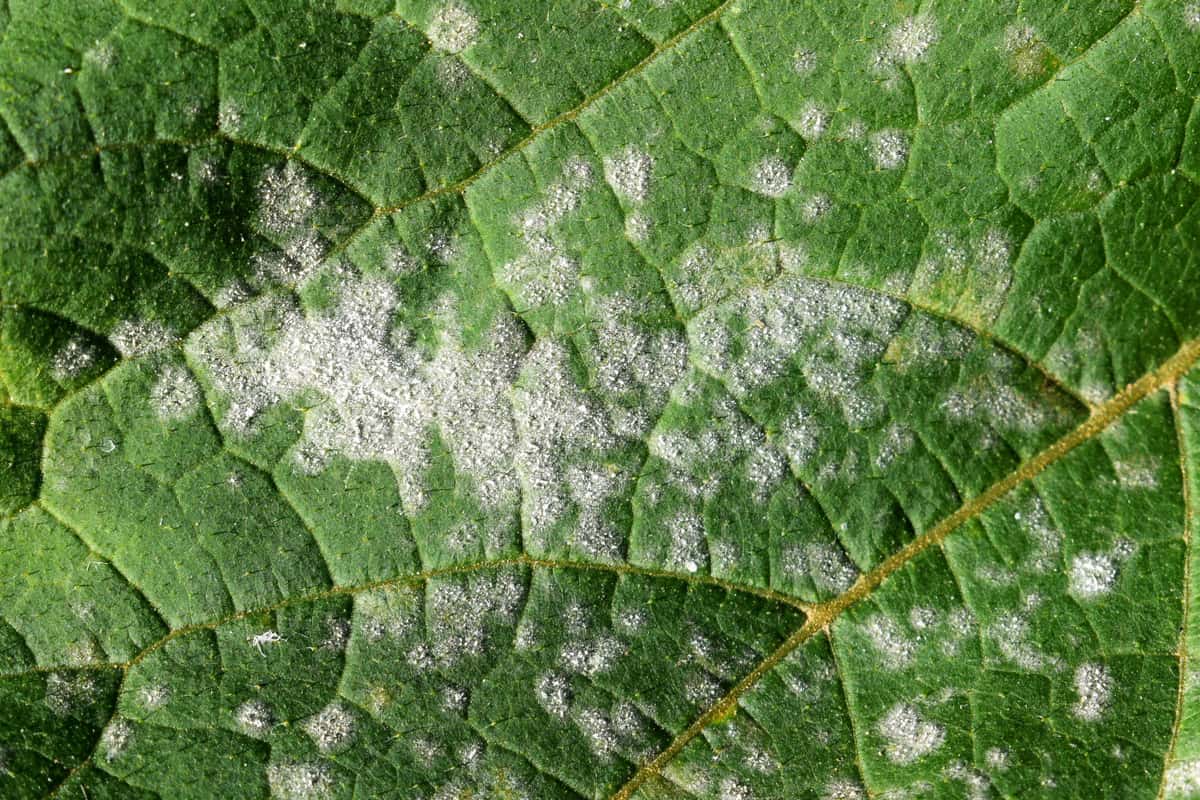
Powdery mildew is a white fungus that looks like a light dusting of powder over your plant. It affects a variety of plants. This fungal disease takes over with a layer of mildew on top of the leaves.
It can negatively affect your plant's growth, look, and overall health.
More often than not, it affects plants in shady areas because they are more susceptible to humidity.
Ways that you can avoid powdery mildew are to plant in a sunnier spot, prune back overcrowded bushes, and choose plants that are resistant to this fungal disease. Prevention is key.
Once you determine powdery mildew is on your plant, remove and discard any infected leaves. Additionally, you can use a fungicide to kill off bacteria.
This disease can spread to other plants, so take caution, wear gloves, and keep them away from other plants.
Leaf Spot
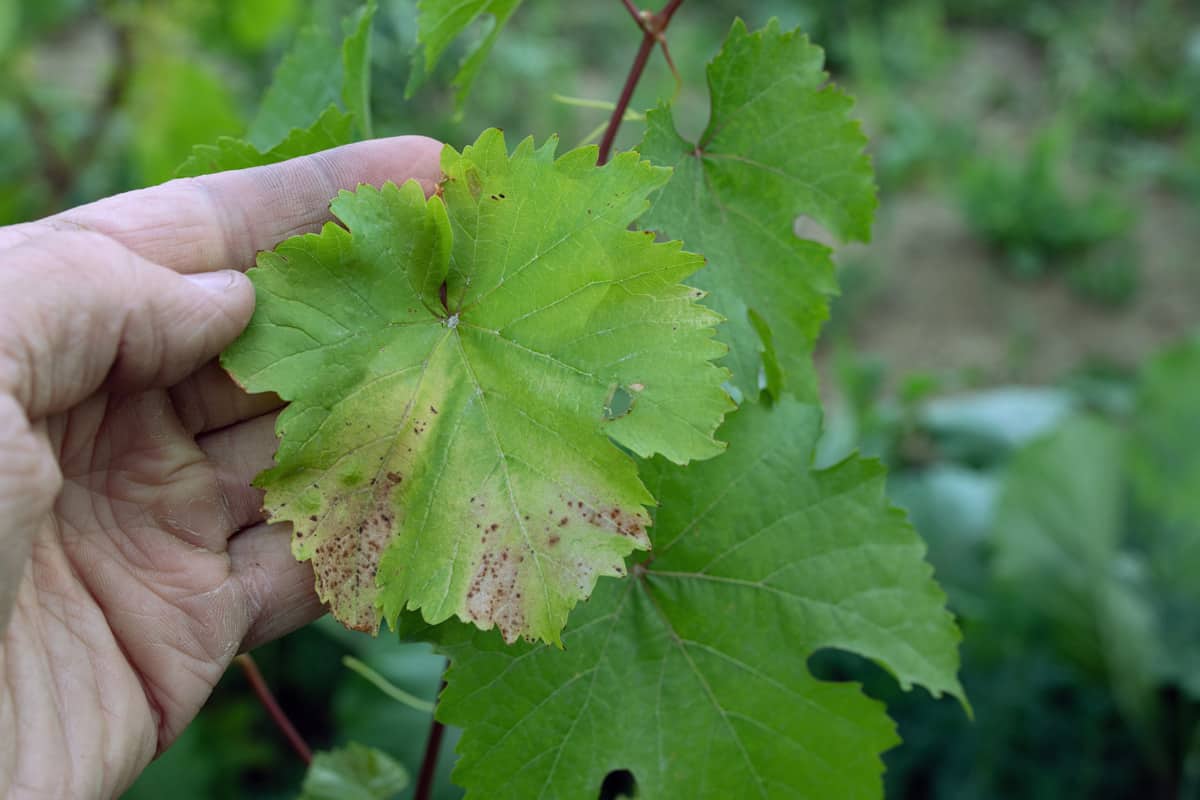
You probably have a leaf spot if you see brown or purple, round spots on your Hydrangea leaves. This fungal disease will turn the leaves yellow and fall off.
Looking on the bright side, your Hydrangeas should still survive.
Take the same cautionary steps to avoid powdery mildew to prevent leaf spots. Leaf spot thrives in humid conditions, so plant in sunny areas and prune back overcrowded plants.
Botrytis Blight
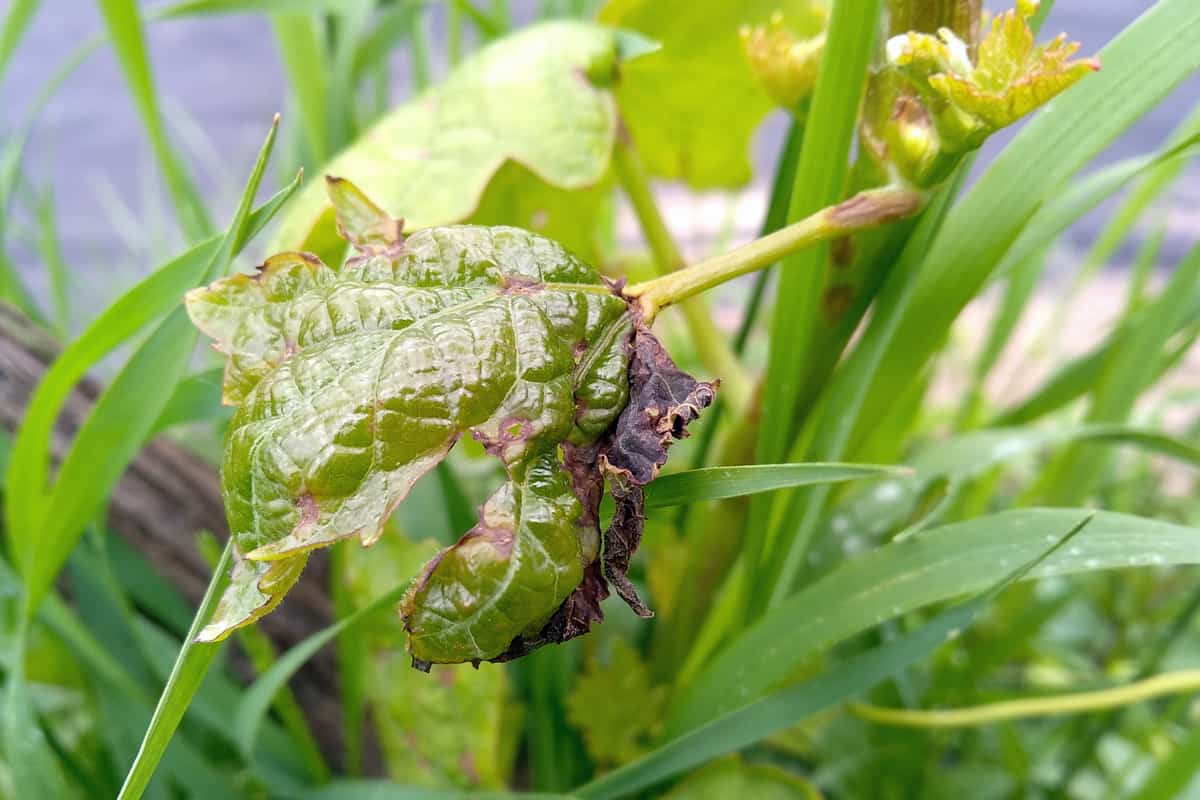
Botrytis Blight is a gray mold that can attack many areas in your garden. It affects the delicate part of the plant, usually the flowers, and causes discoloration, spotting, and overall wilting.
In this case, the plant typically looks like it's dying or has reached the end of its lifespan.
Rain or high humidity can contribute to blight. Destroy infected plants by burning or burying them. Another tip to prevent mold is to water at the base of the plant instead of watering overhead, where the foliage receives the moisture.
Wrapping Up
Now you know all there is to know about Hydrangeas! We are happy you stopped by to learn when You should cut Hydrangeas back for best results. Remember first to check which variety of Hydrangeas you have to know when to prune correctly.
Made it to the end? Check out these related articles:


![When To Cut Back Hydrangeas [And How To Do That]](https://gardentabs.com/wp-content/uploads/2022/08/2.34.-When-To-Cut-Back-Hydrangeas-And-How-To-Do-That-683x1024.png)
![When To Cut Back Hydrangeas [And How To Do That]](https://gardentabs.com/wp-content/uploads/2022/08/3.34.-When-To-Cut-Back-Hydrangeas-And-How-To-Do-That-683x1024.png)
![When To Cut Back Hydrangeas [And How To Do That]](https://gardentabs.com/wp-content/uploads/2022/08/4.34.-When-To-Cut-Back-Hydrangeas-And-How-To-Do-That-683x1024.png)
![When To Cut Back Hydrangeas [And How To Do That]](https://gardentabs.com/wp-content/uploads/2022/08/5.34.-When-To-Cut-Back-Hydrangeas-And-How-To-Do-That-683x1024.png)